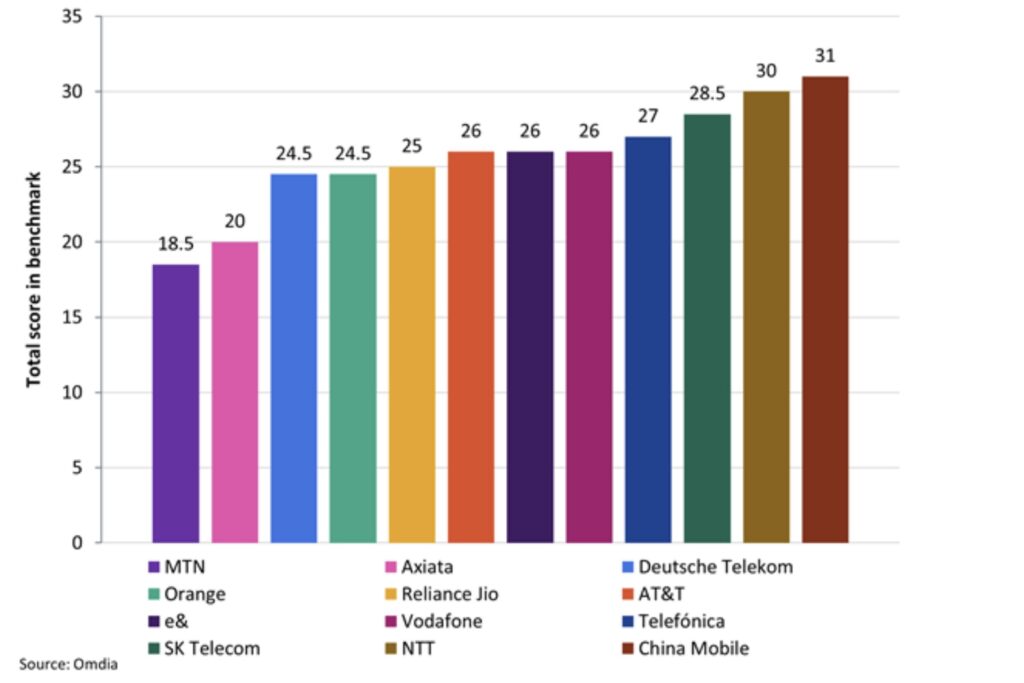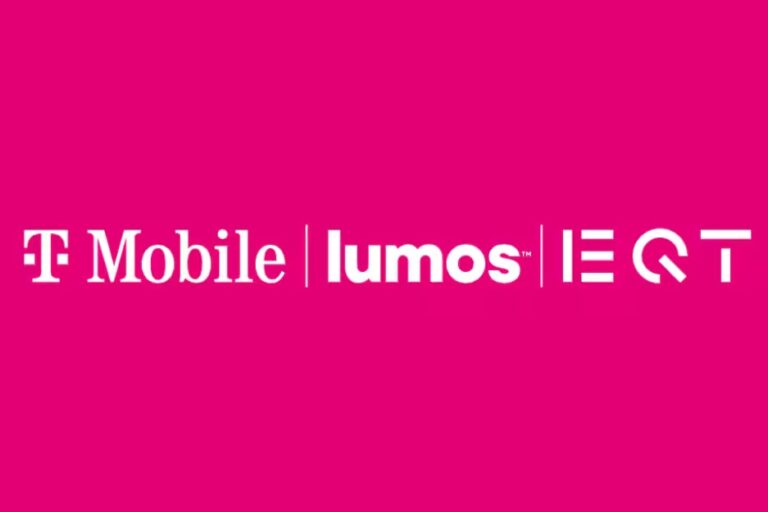Aliette Mousnier-Lompré, CEO of the enterprise business unit since May 2022, talks to Annie Turner about her vision and its execution
Aliette Mousnier-Lompré became CEO of what was Orange Business Services in May 2022 having been its interim head since January. Under the previous strategic plan, Engage2025, Orange Business Services’ strategic goal was to become an integrator, offering ICT to businesses seeking to digitalise by moving to the cloud and become more data-driven.
And it made good progress: in 2015, digital capabilities had accounted for 29% of Orange Business Services’ activities which had risen to 44% in 2022, but revenues stagnated. Income from the new services was not making up for the erosion of the legacy ones, so in September 2022, Mousnier-Lompré announced her turnaround strategy.
Her plans were expanded on at the Capital Markets Day in February 2023 when the group’s new strategic plan, Lead the future, was launched to take it to 2025.
At that launch, Mousnier-Lompré pointed out at that the “operational execution challenges” involved in achieving strategic goals had translated into a 32% EBITDA decline for Orange Business Services over three years.
Decisive overhaul
Hence, she said, the situation “calls for a decisive overhaul of the Orange Business operating model”. The ‘Services’ was dropped from the unit’s name to signify “the simplification and the focus we want to achieve,” Mousnier-Lompré explained. “We aim at being a leading and high-performing network and digital integrator. We clearly have the assets to do so, and we will adapt our operating model and cost structure accordingly. It will be done through a structured action plan on which we regularly report progress.”
The annual earnings report released in February this year and the first quarter’s earnings report published in April show progress is on that front, but what about progress in operational terms and with the business model?
Fundamentally, she wants to accelerate progress away from traditional telco’s product-oriented approach: “We need to move from this vertical model to a much more horizontal model, which is able to integrate connectivity and networks together with digital services to provide an end-to-end, digital transformation support to our customers,” she says. “Customers need this joint and integrated approach between infrastructure and digital services”.
As she says, despite hyperscalers’ huge presence, offering Infrastructure-as-a-Service, “they don’t have the proximity we have with customers to understand [customers’] complexity, the end-to-end landscape between networks, cloud cybersecurity, data layer.
“We make sure from the design phase that when systems are up and running, we can address specific issues, challenges and needs of those customers. Ultimately, we are very, very complementary to hyperscalers and there’s a lot we do together.”
Enterprises want AI
She also feels that developments in AI over the last 18 months confirms and strengthens her strategy. She says that enterprises want to use AI to improve productivity, their portfolios and customer experience, but many do not know where to start: “They are challenged at two levels. The first one is the quality of their data is not good enough to leverage AI. Secondly, their infrastructures are not ready for it because AI is not just an algorithm in the air, in isolation. It’s about how you put those algorithms onto clouds then how do you connect those clouds?”.
She continues, “Our customers need partners and advisors to help them handle the infrastructure layer and the data layer, and that’s where we come in.” Indeed, just after this conversation took place, Orange Business launched new trusted GenAI offers to customers based in France.
Many established AI use cases in operations that don’t need the generative variant, such as predictive maintenance designed to prevent incidents on the network. “Once we get an incident, GenAI capabilities can help the experts or agents to combine information from databases, from everywhere into the systems, identify the problem, and manage the incident,” Mousnier-Lompré explains.
Source of growth
Her view is, “The more we use [AI] internally, the more legitimate we are to advise and leverage it for customers. We use AI in three dimensions: for our own internal needs; to power up our own products and services, for instance, to improve quality of service in our networks and give customers better observability of their services; and we acquired key digital services companies in the past few years around the in the data and AI space, so we provide AI consulting solutions to our customers, especially in France and in Europe.”
She says, “So we have close to 4,000 experts in data and AI,” and “we plan to ramp up this activity, which…is growing fast and the profitability is pretty good. It’s one of our growth engine for the future.”
Which uses case will be critical? Mousnier-Lompré says all thinking about AI-related use cases within Orange Business is around, “What kind of value do [customers] want to create? We ideate around those use cases then we bring the right advisory and consulting services to help them to structure the data and protect the data, to bring those use cases to life at the data layer.”
Modular future
In tandem, Orange Business is adopting a modular approach to products using microservices as part of its horizontal platform strategy, “and to have all those microservices in the right architecture with the right APIs in the right containers, so that we gain agility from that shift to cloud native”.
Accelerating that shift is a key focus for Mousnier-Lompré. Hriday Ravindranath was appointed CTIO of Orange Business in May 2023, joining from BT. As of the beginning of January this year, the business unit had halved the number of products on offer. She says, “We are rethinking really deeply, [not only our] product portfolio, but the full IT and digital architecture.”
Another key aspect of being more agile is shorter lifecycles for product development. “One concrete example is we have virtualised our global backbone in the past year. Now we can open it to partners, and host their technology on our backbone,” she states. They manage the releases of their solutions themselves using APIs.
Previously this created huge amounts of work for Orange Business’ engineers, now it’s done much faster within a fully managed package. Partners include Cisco, Palo Alto and Fortinet.
Legacy challenges
Legacy technology remains challenging, “We have a lot to do internally in terms of changing the skills, changing the culture or changing our pricing models. It’s a very long journey. We are in the middle of it,” she says.
There are still many vertical stacks and “we have an extreme variety of applications and IT systems. It’s as if each product manager built their own IT stack and its own ordering and billing systems, quotation tools and so on. What we are doing now with Usman [Javaid, PhD, who joined the unit as Chief Products and Marketing Officer in April last year] is a product portfolio reshaping.
“We want customers to come onto our portals and have the right experience when asking for a quotation…then ordering and having all the information available. It means we need a unified IT stack, with one reference in mind – the customer journey.
“We have designed this, done the theory, now we are moving to practice. We’ve launched a series of RFPs to the market to reshape everything we do. We’ll go with some big SaaS players and we’re working with an IT integrator to rebuild a modular, greenfield IT stack. We’ll need probably need two or even three years to rebuild all of this in the right way.
But won’t it be legacy by then? “The whole challenge of readying of the entire company is to make sure that we build something which is future proof – modular and open – so that it will not be legacy in three years.”
API leader?
APIs are key to this modularity. Is Orange Business ahead of the pack in its use of APIs? Mousnier-Lompré stresses her company’s participation in TM Forum’s API initiative and CAMARA, but thinks in some areas it is ahead, such as in their use outlined above with the virtualised global backbone, using open source on commoditised hardware for voice by decoupling the architecture and in secure B2B connectivity.
She cites Gartner’s long-standing recognition of its leadership concerning secure B2B connectivity in its Magic Quadrant and adds, “We are improving over time in terms of differentiating versus our competition”.
She stresses that 5G Standalone is an inherent part of that platform vision. Mousnier-Lompré muses, “We are slowly but surely getting to the more major phase of the growth and return on investment for clients…although we had all those question marks around 5G. It’s not about technology, it’s about use cases, it’s about the value you create.
“We see a lot of the so-called smart industries or industrial 5G cases coming, but it’s not about 5G alone, it’s 5G combined with cloud at the edge, combined with IT and OT and cybersecurity, combined with AI, combined with the ability to integrate all of this into a single project encompassing all those technologies.
“So we see our pipe[line] picking up. We are working with customers at the moment to create value by combining various technologies.”
In conclusion
She concludes, “We describe ourselves as a network and digital integrator, having this legitimacy to orchestrate the infrastructures across what we call the three C’s – connectivity, cloud and cybersecurity – and orchestrating those infrastructures together with a data layer on top. We help our customers structure the data to get fit for purpose networks to address their needs.
All of this requires a huge transformation, in terms of operating models, culture and skills, but after now, almost one year and a half after launching our strategy and the Lead the Future plan, we are absolutely on track maybe even a bit ahead of the plan. I am very, very optimistic for the future.”














